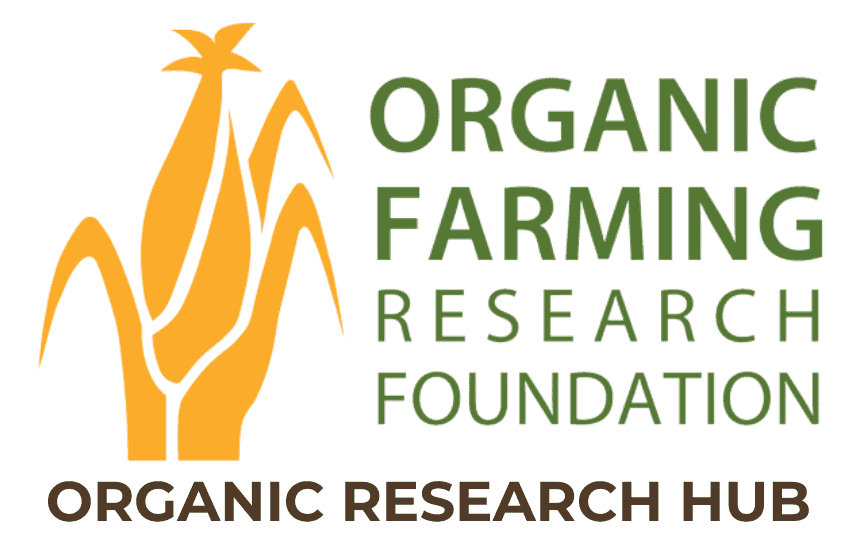Impacts of Diverse Agricultural Management Practices on Crop, Soil, and Environmental Indicators: A Meta-Analysis
Project Director: Madaline Young, Wageningen University
Project Overview
Given the diversity of global agricultural operations, management practices, and site-specific factors, it can be difficult for farmers to predict outcomes to specific management changes.
Meta-analysis serves as a powerful statistical tool for comparing outcomes and conditions between independent studies; in the context of global agricultural research, meta-analysis can help elucidate important trends (or discrepancies) between studied management practices or site characteristics and important outcomes such as crop yield or soil nutrient content.
In this study, 113 meta-analyses from around the globe were reviewed in order to evaluate the impacts of agricultural management practices, soil and water measures, soil amendments, fertilizer use, and fertilization strategies on outcome metrics including crop yield, crop N and P, soil quality indicators, soil greenhouse gas emissions, and nutrient losses.

Farmer Takeaways
- Site-specific factors (including climate zone, soil texture, soil pH, crop type, and N dose) can strongly impact agricultural outcomes.
- Organic N fertilizers can contribute to the long-term accumulation of soil organic carbon (SOC) by promoting healthy microbial activity, plant growth, and soil aggregate formation.
- Organic N fertilizers can significantly reduce N leaching compared to synthetic N fertilizers.
- Enhanced efficiency fertilizers and 4R fertilization strategies (right source, rate, timing, and placement) can be effective in increasing crop N uptake and crop yield while reducing greenhouse gas (GHG) emissions.
- Cover cropping and crop rotation can enhance N uptake in crops and reduce N leaching.
- Biochar has the potential to increase SOC, improve crop yields, and reduce N2O emissions, although additional research is needed to fully understand its potential and long-term impacts.
Project Objectives and Approach
Conducting the Meta-Analysis
113 global agricultural meta-analyses were reviewed, each of which linked at least one of the following management practices with one outcome metric:
Management Practices: Crop rotation; cover cropping; residue retention; irrigation; tillage; enhanced efficiency; biochar; organic, mineral, and combined organic-mineral fertilization; and 4R fertilization strategies (right source, rate, timing, and placement)
Outcome Metrics: Crop yield; crop N and P (content, uptake, and use efficiency); soil organic C, N, and P contents; soil compaction; soil emissions of ammonia, nitrous oxide, and carbon dioxide; and nutrient losses to water (N and P surplus or leaching)
Calculating Effect Sizes
Effect sizes were calculated and reported as percentages of change from baseline or control values, with negative values indicating a decrease in an outcome metric due to a specific management practice, and positive values indicating an increase.
Estimating Impacts of Site-Specific Factors
Several site-specific factors including climate zone, soil texture, soil pH, crop type, N dose, and experimental duration, were assessed to determine the degree of sensitivity/interrelatedness of agricultural outcomes to site-specific factors.
Key Findings
 Crop rotation and cover cropping can increase N uptake and C/N sequestration in soil, thereby reducing N2O emissions and N surplus
Crop rotation and cover cropping can increase N uptake and C/N sequestration in soil, thereby reducing N2O emissions and N surplus
- Clear positive effects were observed for crop N in systems with cover cropping (+19%) and crop rotation (+11%), indicating that these management practices may promote nitrogen uptake in crops.
- Cover cropping may promote nitrogen uptake in crops due to the increased availability of soil N via nitrogen-fixing legumes and the decomposition of nitrogen-containing organic matter/residue.
- Crop rotation may promote nitrogen uptake in crops due to carefully-timed plantings that coordinate soil nitrogen availability with either N-intensive or non-N-intensive crops.
- Reductions in N2O emissions were observed for both management practices (-5% and -4%, respectively), suggesting a reduction in denitrification and an increase in nitrogen use efficiency (NUE).
Enhanced efficiency fertilizers and 4R fertilization strategies (right source, rate, timing, and placement) can increase crop yield and crop N while reducing CO2, N2O, and NH3 emissions
- The use of enhanced efficiency fertilizers (including urease inhibitors, controlled release, and nitrification inhibitors) resulted in a 5.7% mean increase in crop yield and a 14% increase in crop N, indicating that these fertilizers are effective at providing crops with essential nutrients during important stages of growth.
- Nitrification inhibitors may reduce N2O emissions by delaying nitrification until the crop has grown enough to absorb more nitrate, therefore increasing NUE and reducing denitrification.
- Urease inhibitors and controlled-release fertilizers may reduce NH3 emissions by reducing overall soil ammonium concentrations.
Applying biochar has the potential to improve soil organic carbon (SOC) and crop yields, while simultaneously reducing N2O emissions and N leaching in the short-term
- Biochar amendments increased SOC by 27%, improved crop yields by 8.3%, and reduced N2O emissions by 40%.
- This observed stimulation in crop yield could be attributed to several factors, including biochar’s positive interactions with soil pH and cation exchange capacity.
- Additional studies are needed in order to assess the long-term effects of biochar application.
Organic N fertilizers can gradually build SOC and reduce N leaching, but may result in slight yield reductions and increases in N2O and CO2 emissions compared to soluble N fertilizers
- SOC may increase by ~1% per year under organic N fertilization, while N leaching may be reduced by as much as 43%, suggesting that the decomposition rate of organic N sources may better coincide with a crop’s ability to utilize available nutrients throughout the growing season.
- Organic N fertilization may result in a slight decrease in overall crop yield (5%) and increase in both N2O (23%) and CO2 emissions (36%). These increases in emissions may be attributed to enhanced soil microbial activity.
Resources
Madaline D. Young, Gerard H. Ros, Wim de Vries, Impacts of agronomic measures on crop, soil, and environmental indicators: A review and synthesis of meta-analysis, Agriculture, Ecosystems & Environment, Volume 319, 2021
Read MoreLocation
Wageningen, NetherlandsCollaborators
Gerard Ros, Wageningen University
Wim de Vries, Wageningen University
Region
Outside U.S.
Topic
Soil Health, Crop Nutrient Management, Cropping Systems
Year Published
2021

